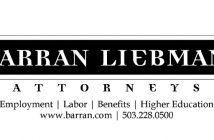It is a common euphemism amongst solar industry professionals that the only constant in the industry is change. While this statement definitely carries some truth, there is also an underlying theme of consistency such as what we see in the automotive industry. The engine of a car may change from year to year – from gasoline to hybrid electric to fully electrically-driven but the car still consists of an engine, four wheels, steering components, and a protective shell. It is the way in which all the components perform, or the driver’s interaction with the automobile that have advanced over the years. So it is with the solar industry. Still, this past year has brought certain advances that are worth sharing here.
SOLAR INCENTIVES
The biggest breakthrough for Oregon residents in 2010 was the solar electric feed-in tariff incentive for Pacific Power, Portland General Electric and Idaho Power customers throughout the state. A result of House Bill 3039, the feed-in tariff is loosely based on a production incentive structure successfully used in Germany since 2004.
Pacific Power calls it the Oregon Solar Incentive Pilot Program while Portland General Electric refers to it as the Solar Payment Option. Due to its nature as a pilot program, the feed-in tariff is released in rounds at a decreasing rate every six months until statewide demand reaches a certain threshold.
The first round of system capacity was released July 1 with the second round released on October 1. There was such high demand for reservations under this program that the July and October allocation dates sold out in just a few minutes. The next capacity for system reservations will be released April 1, 2011.
Rather than a cash incentive to lower the out-of-pocket cost (as is the case with the Energy Trust of Oregon incentive that was in place prior to July 1), the feed-in tariff is a premium payment by the electric utility to a business or homeowner for the solar electricity generated on their property.
The premium payment is a fixed rate per kilowatt-hour (kwh) over a 15-year contract, and depends on your utility company, the time at which you sign up (which round of capacity) and the region in which your building is located. The feed-in tariff is proving to be an economically viable solution for residential and commercial applications alike. Homeowners and business owners can see an internal rate of return upwards of 10-16 percent and can typically recover their out-of-pocket cost over an 8-10 year period.
PV POWERED
Another local breakthrough was the acquisition of PV Powered, the Bend-based inverter manufacturer, by Colorado-based Advanced Energy in late March. PV Powered was founded in Bend in 2003 and has maintained their headquarters here for the past seven years, providing green jobs to engineers, assembly technicians, technical support personnel, administrative support and a host of other specialties in the community. A couple months later, PV Powered announced they had released two new commercial inverters- 35-kW and 50-kW in size- to serve an industry-wide gap in commercial inverter products. Solar electric installers and system integrators nationwide benefit from these product additions.
SOLAR AT THE WHITEHOUSE
On a national level, the federal government announced plans on October 5 to install solar hot water panels and solar electric (photovoltaic, or PV) panels on the White House. This is in response to the SolarOnTheWhiteHouse campaign which petitioned the government with 50,000 signatures from various solar organizations and passionate citizens collected over the course of less than six months. The installations will comprise a demonstration project by the Department of Energy to educate the public on solar technologies. More importantly, they are a powerful symbol to the American people. However, the two systems are not expected to offset a significant portion of the White House’s energy use so maybe the Obama’s should follow the example of homeowners nationwide by first having a Home Energy Audit.
Of course, no event marks the solar industry’s annual progress as much as the Solar Power International Expo and Conference which arrived one week after the White House solar installation announcement. Solar Power International, or SPI, is touted as “North America’s largest business-to-business solar event” and, as with any conference, its success is measured by the number of attendees and exhibitors, speakers and workshops. This year’s conference, which took place on October 12-14 at the Los Angeles Convention Center, is estimated to have attracted over 27,000 attendees, up from 24,000 in 2009 and 17,500 in 2008.
One of the real show stoppers at this year’s Expo was California-based Zep Solar, which claims to dramatically reduce installation time with their patented, integrated solar electric module roof-mount system. Their system eliminates the need for rails as traditionally used in rooftop installations, thereby reducing necessary materials and installation costs. Not only are they working to make solar more affordable to install, they also eliminated paper and handouts from their booth to reduce their marketing-based waste. With iPads strategically placed throughout their booth, attendees could view Zep Solar’s handouts directly on the iPad, or enter their name and email address to receive electronic versions and future updates. It is so simple yet so smart.
MICROINVERTER MANUFACTURERS
The conference also had an increase in microinverter manufacturers and frameless solar electric modules. Enphase Energy was the only microinverter manufacturer present at Solar Power International 2008, but many more have now stepped up to bat offering ever-innovative data monitoring opportunities for homeowners and business owners. Rather than one or a few central inverters near the building’s breaker panel, microinverters are installed individually on a solar electric module, allowing each one to generate AC electricity on the roof which is then routed to the breaker panel.
The solar industry has certainly advanced technologically by leaps and bounds over the past few years and the real constant is change in components, affordability, accessibility and incentives. Any way you look at it, in a time when we hear news every day about a stagnant economy, it is refreshing to bear witness to exciting progress in unexpected ways, by unexpected means.
Stephanie Manzo is Outreach & Marketing Director, Certified Sustainable Building Advisor for Sunlight Solar Energy, Inc. in Bend. 541-322-1910, stephanie.manzo@sunlightsolar.com




